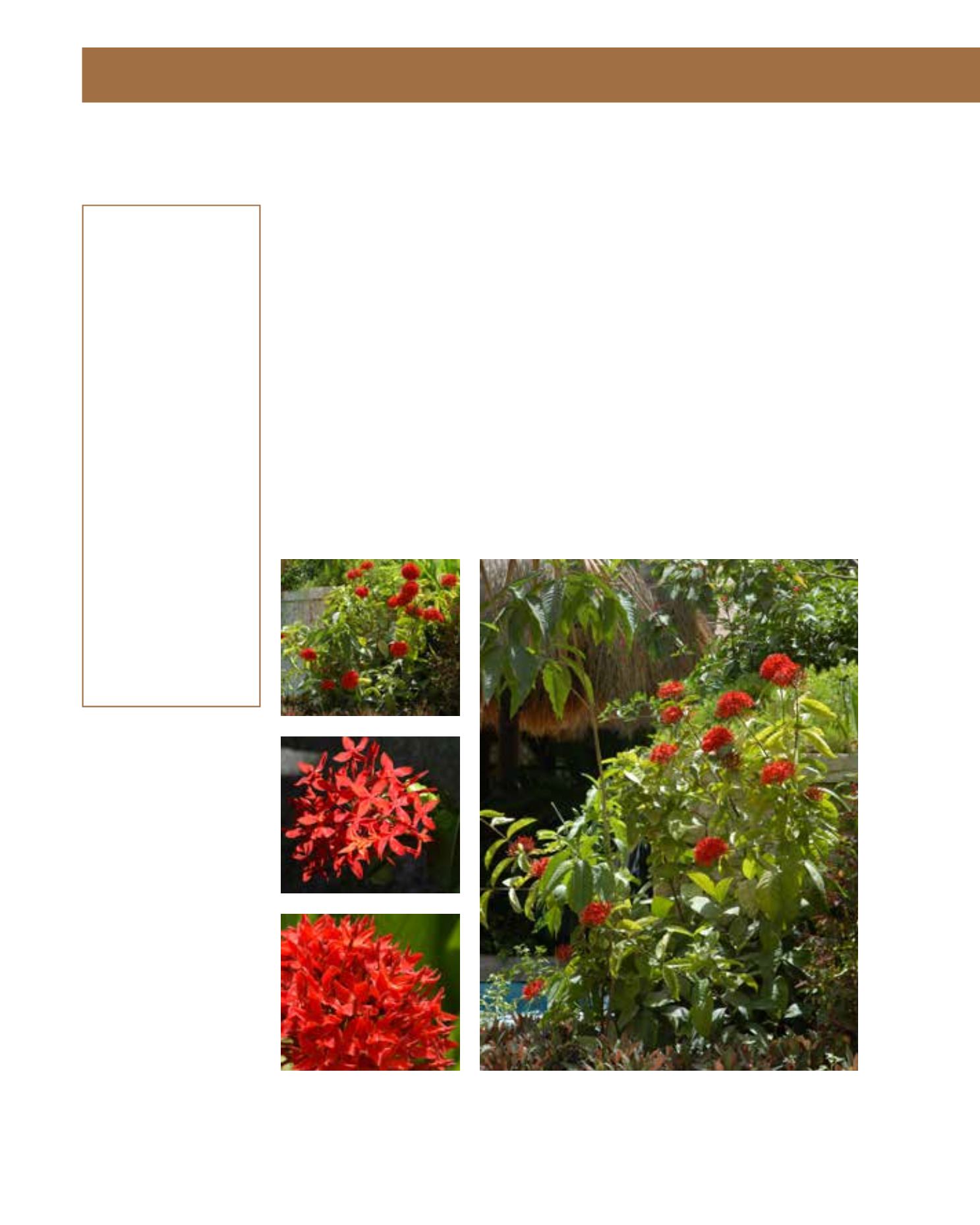

GENERAL
Origin
:
tropical
Vigour
:
slow-growing
Humidity
:
semi-humid, very
humid, extremely
humid
Propagation :
cuttings
Maintenance :
moderate
CONDITIONS
Urban climate :
resistant
Dessication :
vulnerable
Stagnant water :
vulnerable
Irrigation
:
medium
Salinity/ppm :
moderate (2000
ppm)
Hardiness
:
0°C
SHAPE
Type
:
shrub
Height
:
0.7 m-1.5 m
Spread
:
0.7 m-1.5 m
Foliage
:
evergreen
FLOWER
Colour
:
bright orange
Size
:
5 cm - 12 cm
Period
:
July - August
FRUIT
Type of fruit :
berry
Fruit size
:
1 cm
This round shrub originates from the tropical and subtropical forests from Malaya to China. It
grows moderately fast to about 1.5 metres in height. The shiny, dark-green foliage is attractive and
takes Arriyadh’s climate relatively well in a protected garden environment. The oval leaves may
reach 15 cm in length. The Flame of the Woods bears spherical cymes of 12 cm diameter, consi-
sting of scarlet florets. They seem to glow when the shrub is located beneath trees that cast light
shade. Types with red, orange and yellow flowers may also be found in cultivation. The peak of
floral display is in summer, but inflorescences appear all year round. Flowers are followed by hard
berries. Some cultivars remain compact dwarf types, and are therefore ideal plants for containers.
The plant tolerates some salinity and brief periods of drought, but performs best in nutritious,
well-drained soil which is moist and acidic. Alkaline soil results in iron deficiency, as indicated
by yellow leaves. Fertilisers should be applied frequently, especially during the flowering period.
It also responds well to compost and manure. Light requirements range from partial shade to
full sun. The shrub can be grown as a flowering hedge and takes pruning at any time of the year.
It looks best grouped in mixed borders with some shade in the afternoon. Adverse conditions
ease infestations by scale insects and nematodes. It may be propagated in summer by softwood
cuttings. The plants require initial protection against transpiration.
167
Ixora chinensis,
Rubiaceae
Ixora,
Flame of the Woods
















